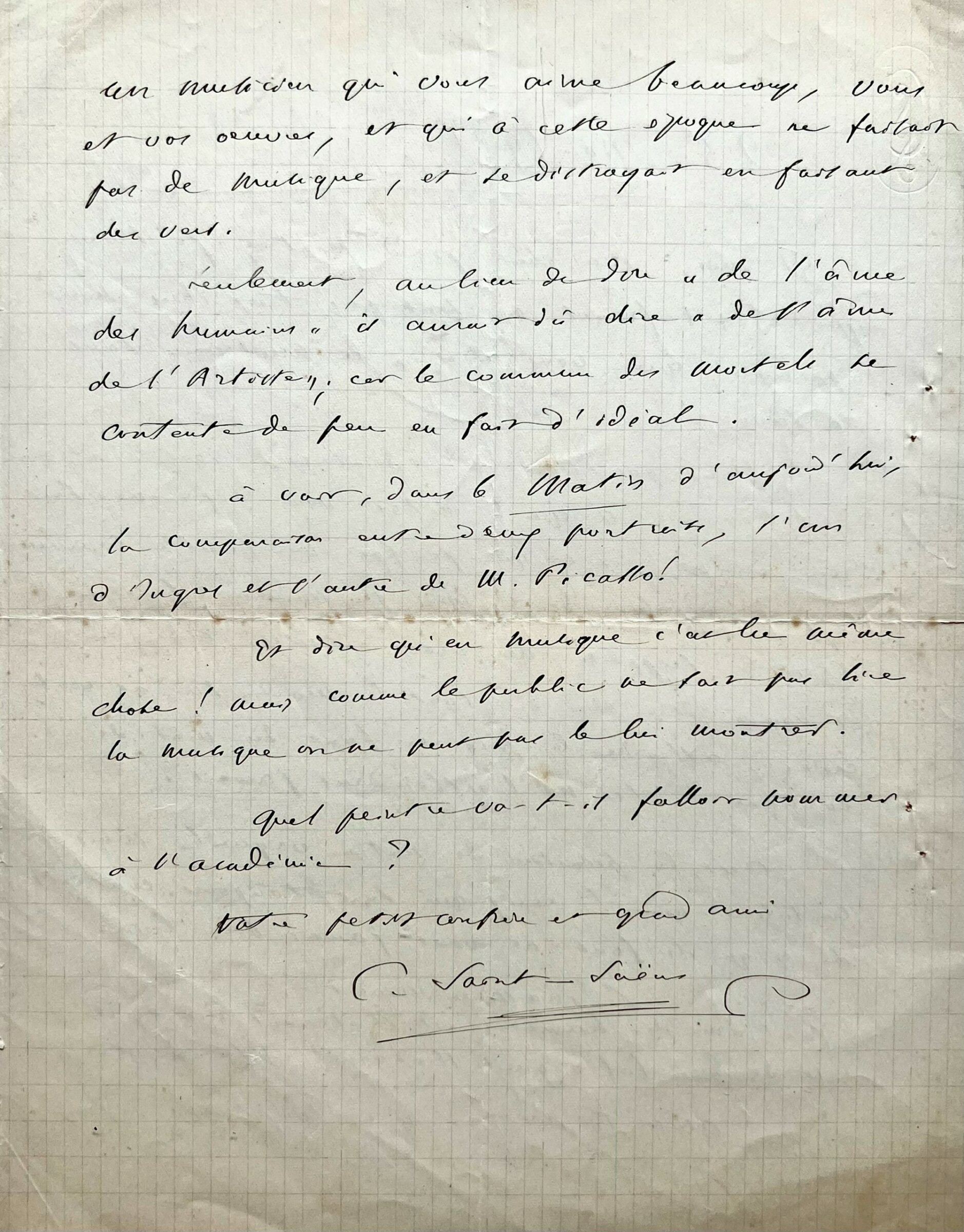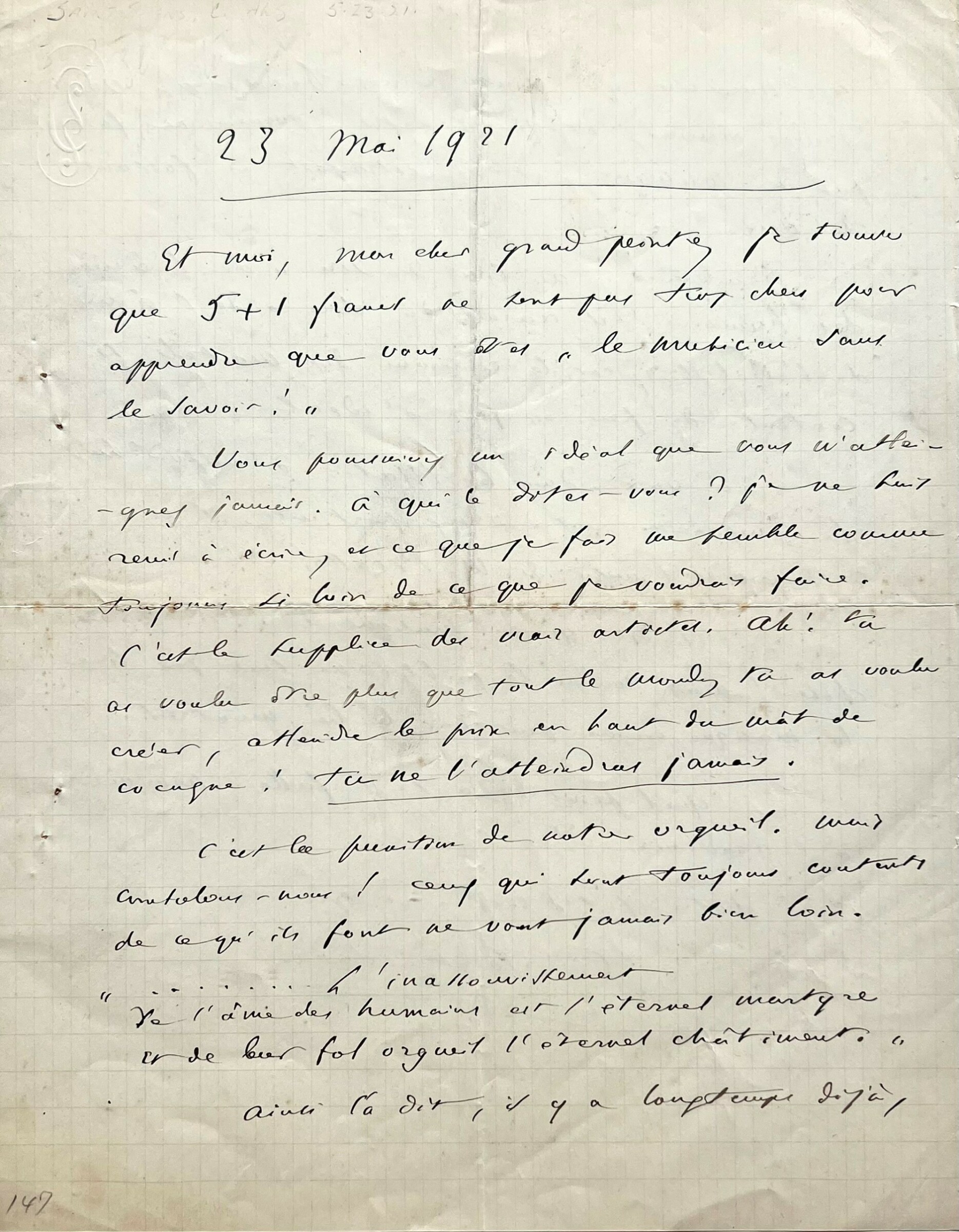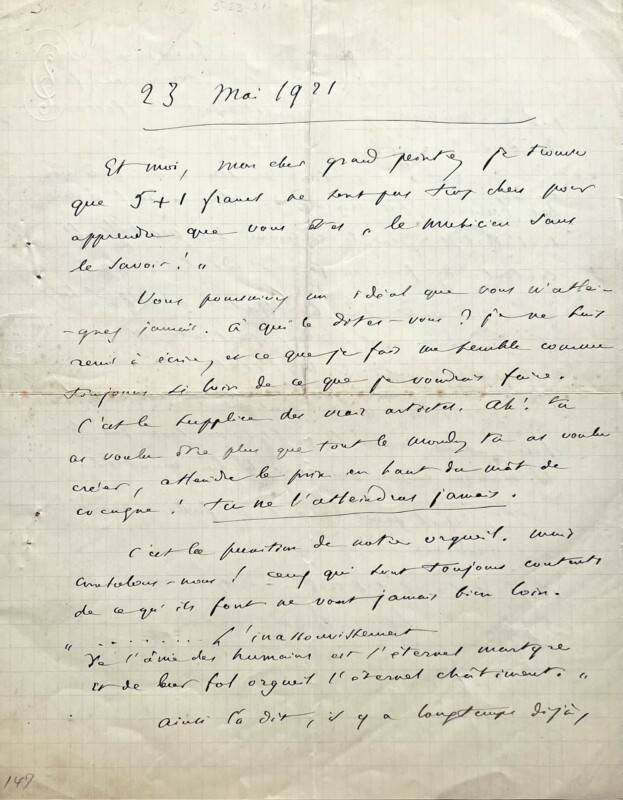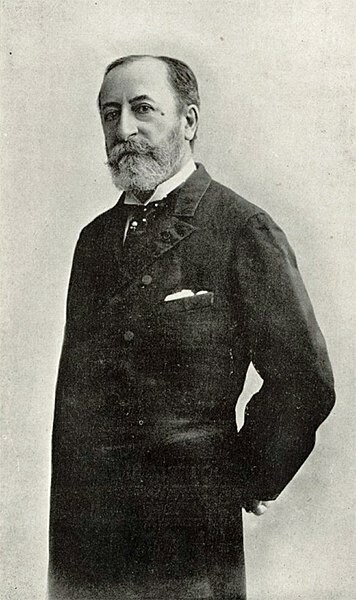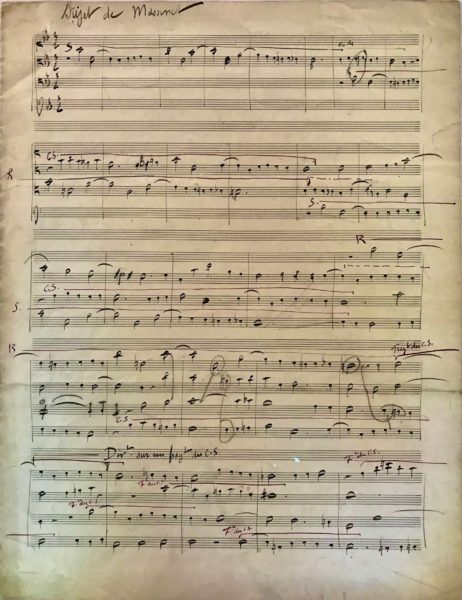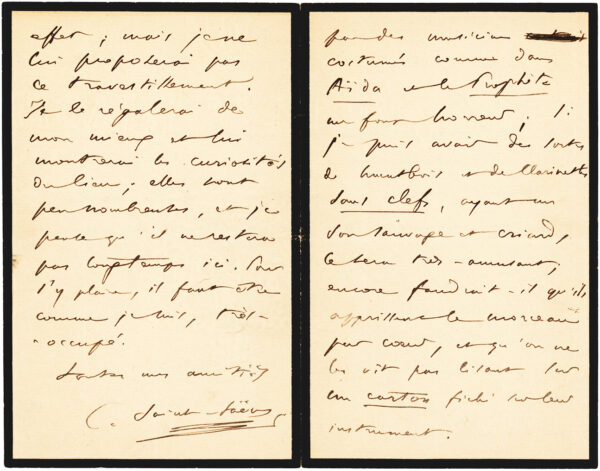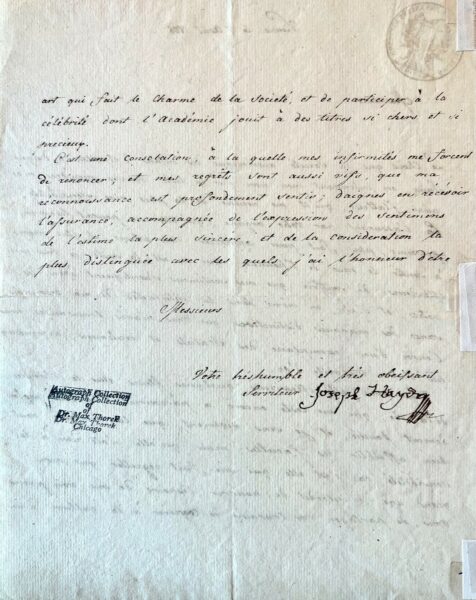SAINT-SAENS, CAMILLE. (1835-1921). French composer and organist. ALS. (“C. Saint-Saens”). 2pp. 4to. N.p., May 23, 1921. Written on both sides of a sheet of writing paper blind-embossed with the composer’s initials, “CSS.” In French with translation.
“As for me, my dear great painter, it is my opinion that 5 + 1 francs are not too much to learn that you are an ‘unwitting musician.’
You are pursuing an ideal which you will never attain. Who are you saying this to? I have started to write again, and what I am doing seems to me, as usual, so far from what I would like to be doing. That is the agony of true artists. Ah, you wanted to be more than everyone else, you wanted to create, to attain the prize at the top of the greasy pole! You will never reach it.
This is the punishment for our pride but let us console ourselves! Those who are always content with themselves never go far. ‘…….The frustration of the human soul is the eternal martyrdom, and of its foolish pride their eternal punishment.’
So, a long time since, said a musician who is very fond of you, and your works, and who, at that time, not making music, distracted himself by writing verse.

